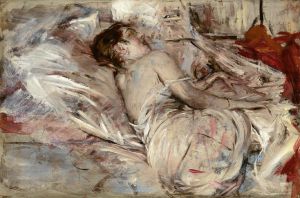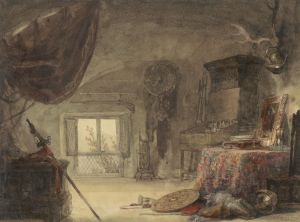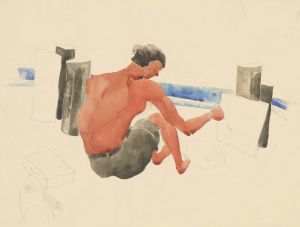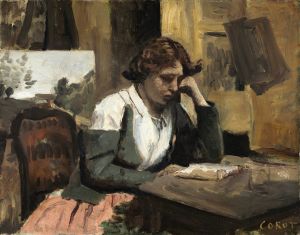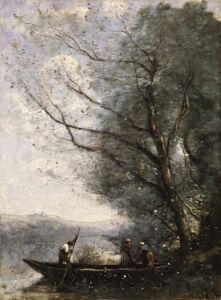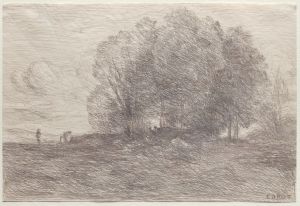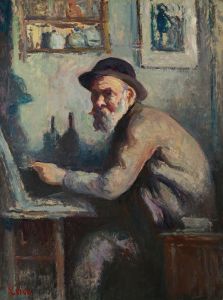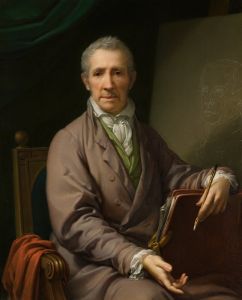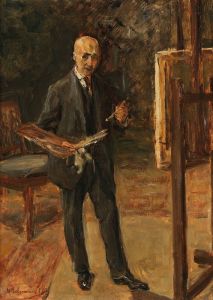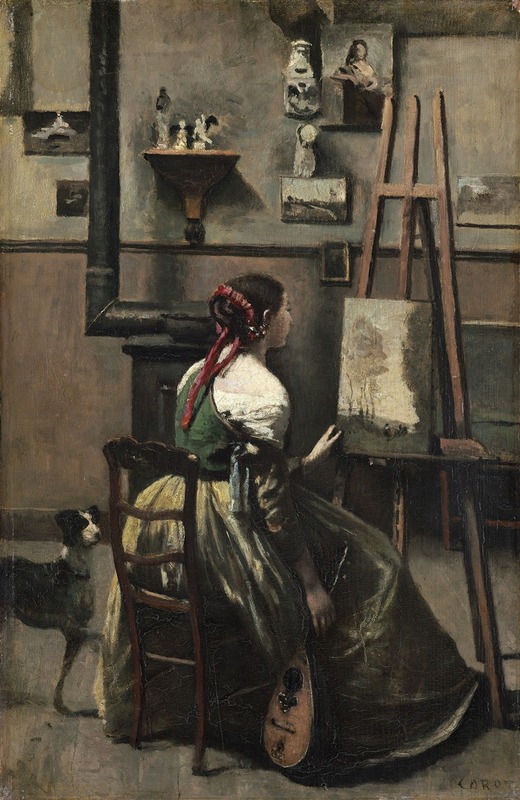
Corot’s Studio – Woman Seated Before an Easel,a Mandolin in her Hand
A hand-painted replica of Jean-Baptiste-Camille Corot’s masterpiece Corot’s Studio – Woman Seated Before an Easel,a Mandolin in her Hand, meticulously crafted by professional artists to capture the true essence of the original. Each piece is created with museum-quality canvas and rare mineral pigments, carefully painted by experienced artists with delicate brushstrokes and rich, layered colors to perfectly recreate the texture of the original artwork. Unlike machine-printed reproductions, this hand-painted version brings the painting to life, infused with the artist’s emotions and skill in every stroke. Whether for personal collection or home decoration, it instantly elevates the artistic atmosphere of any space.
Jean-Baptiste-Camille Corot, a pivotal figure in 19th-century French painting, is renowned for his contributions to landscape painting and his influence on the Impressionist movement. One of his notable works, "Corot’s Studio – Woman Seated Before an Easel, a Mandolin in her Hand," exemplifies his unique style and thematic interests. This painting reflects Corot's fascination with the interplay between figure and setting, a recurring theme in his oeuvre.
Corot was born in Paris in 1796 and began his artistic career relatively late, at the age of 26, after working in his family's textile business. He studied under Achille-Etna Michallon and Jean-Victor Bertin, both of whom were proponents of the neoclassical tradition. However, Corot's style evolved to incorporate a more naturalistic approach, characterized by a delicate treatment of light and atmosphere. His work laid the groundwork for the Impressionists, who admired his ability to capture the transient effects of light and his loose brushwork.
"Corot’s Studio – Woman Seated Before an Easel, a Mandolin in her Hand" is a testament to Corot's interest in combining portraiture with genre scenes. The painting depicts a woman seated in a contemplative pose, holding a mandolin, with an easel positioned nearby. This composition suggests a narrative of artistic creation and leisure, themes that were popular in 19th-century art. The presence of the mandolin, a symbol of music and harmony, adds an element of cultural refinement and introspection to the scene.
Corot's technique in this painting is characterized by his soft, muted palette and the gentle blending of colors, which create a harmonious and serene atmosphere. His brushwork is fluid and expressive, capturing the subtleties of light and shadow. This approach reflects his mastery of balancing detail with a sense of immediacy, a quality that would later influence the Impressionists.
The setting of the painting, presumably an artist's studio, is rendered with a sense of intimacy and quietude. Corot often depicted interiors and landscapes with a similar sensitivity to mood and ambiance. His ability to evoke a sense of place and emotion through his compositions is a hallmark of his work.
Corot's influence extended beyond his lifetime, as he became a mentor to younger artists and a respected figure in the art community. His works were exhibited widely, and he received numerous accolades for his contributions to art. "Corot’s Studio – Woman Seated Before an Easel, a Mandolin in her Hand" is a reflection of his enduring legacy and his ability to capture the essence of his subjects with grace and subtlety.
In summary, Jean-Baptiste-Camille Corot's "Corot’s Studio – Woman Seated Before an Easel, a Mandolin in her Hand" is a significant work that exemplifies his skill in blending portraiture with genre scenes. Through his delicate use of color and light, Corot creates a tranquil and introspective atmosphere, highlighting his influence on the development of modern art. His contributions to the art world continue to be celebrated, and his works remain an integral part of the study of 19th-century painting.





